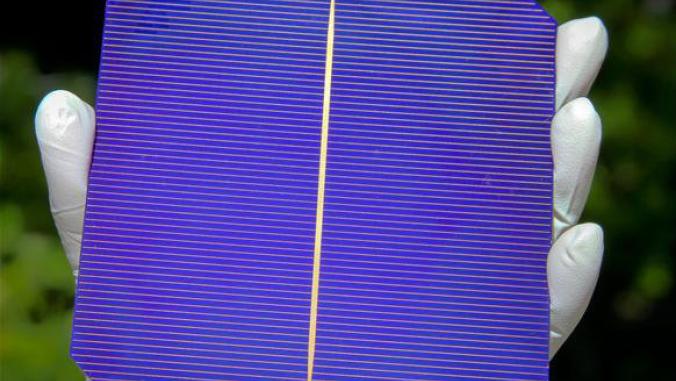One year later, Hurricane Sandy fuels grid innovation
<p>Hurricane Sandy was a painful wakeup call on grid vulnerability that catalyzed investment in distributed energy and smart grid tech.</p>

Image of Hurricane Sandy blackout by NASA via Flickr
For years, people talked about how important modernizing the grid is to our planet. But Hurricane Sandy proved to be a more powerful impetus, pushing states to accelerate spending on smart grid technology and distributed energy to make the electrical infrastructure more resilient.
Next week marks the one-year anniversary of the arrival of Hurricane Sandy to the east coast of the United States, a storm responsible for dozens of deaths and massive economic losses. In the immediate aftermath, the most jarring effect in the U.S. was the destruction to infrastructure. At its height, more than 8 million people were without electricity, preventing them from heating homes, filling gas tanks, getting drinking water or going to work or school, sometimes for weeks.
Since Sandy, there’s been a marked shift in thinking. Five years ago, smart grid advocates may have emphasized reducing carbon emissions with a higher penetration of renewable energy or providing consumers with better information to save energy. Now, technologies that enable a more resilient and reliable grid are on the fast track, particularly in places that experienced severe storms.
“It was one of those tipping points where utilities, regulators, the policymakers all agreed that there needed to be not just incremental, but significant new investments to deal with severe weather,” says Rick Nicholson, vice president of transmission and distribution solutions at Ventyx, the software arm of utility supplier ABB. With stimulus dollars spent, utilities now need to justify smart-grid investments with promises of better reliability and storm preparedness, he says.
Sandy came after a series of costly storms in previous years on the East Coast, which helped build support for major upgrades to the power infrastructure. After Sandy, New Jersey utility PSE&G, for instance, has developed Energy Strong (PDF), a proposal to spend $3.9 billion over 10 years on range of measures. One supporter of the plan, the Southern New Jersey Development Council, estimates Sandy caused over $30 billion in physical damage and $20 billion in economic losses. Sandy also accelerated storm preparedness plans in places that were not directly affected but are still vulnerable to extreme weather, says Nicholson.
Much of the money earmarked for grid upgrades is being spent on hardening the infrastructure, such as putting power lines underground or installing sealed power distribution equipment that can operate when flooded. But smart grid technology is part of the response as well. For example, utilities are using data analytics to better predict the impact of an incoming storm and simulating responses to prepare in advance. Utilities are also investing in systems to communicate with customers and mobile computer equipment for field workers doing repairs, says Nicholson.
Using distributed energy for back-up power also has gained ground since Sandy. During the prolonged outages after the storm, a number of microgrids were able to operate independently from the grid and provide some electricity and heat. Since then, more commercial customers are investing in combined heat and power generators or fuel cells that can go into “island” mode and operate independently during an outage.
Energy storage is another technology that’s seen in new light post Sandy. More than 20,000 solar systems are in New Jersey, yet nearly all of them were unable to generate electricity in the storm’s wake, notes Tom Leyden, CEO of Solar Storage Solutions, which makes a battery system for commercial solar installations. “Sandy has definitely catalyzed a lot of innovation,” he says. “All of these states are looking at incentives for storage to strengthen their grid.”
In places that aren’t as vulnerable to storms, utilities have different priorities. For example, in Europe, the priority is finding technology to integrate high levels of intermittent renewable energy. Similarly, California just passed an energy storage mandate (PDF) for utilities, which the state utility commission considers essential to meeting greenhouse gas reduction targets with a high penetration of renewables.
Of course, many technologies can both improve grid reliability and help reduce carbon emissions. But creating a more resilient infrastructure in the face of severe storms remains a more urgent priority for utilities and policymakers -- at least while the memory of Sandy’s devastation is still fresh. For anyone who has suffered from losing power for days, that’s an idea that’s easy to get behind.
Image of Hurricane Sandy blackout by NASA via Flickr





